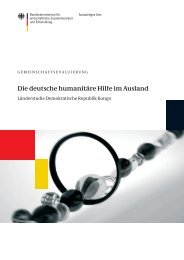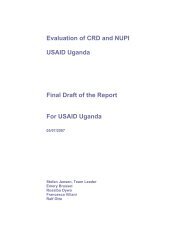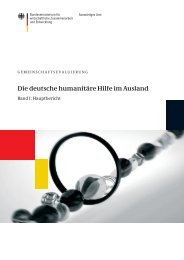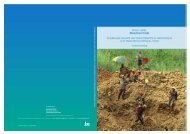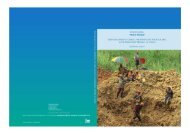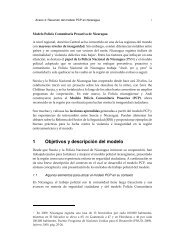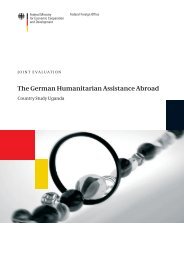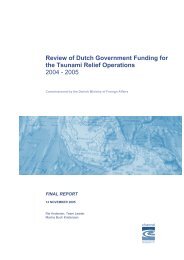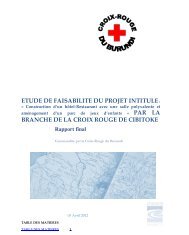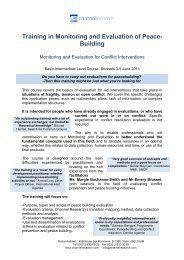A ripple in development? - Channel Research
A ripple in development? - Channel Research
A ripple in development? - Channel Research
Create successful ePaper yourself
Turn your PDF publications into a flip-book with our unique Google optimized e-Paper software.
As described <strong>in</strong> the Terms of Reference drawn up by the Jo<strong>in</strong>t Steer<strong>in</strong>g<br />
Committee, the assessment is presented <strong>in</strong> three outputs conta<strong>in</strong><strong>in</strong>g:<br />
1. The summary evaluation report <strong>in</strong>tended for a large public audience<br />
2. The ma<strong>in</strong> detailed technical report<br />
3. The Document Review cover<strong>in</strong>g the literature currently accessible<br />
For those wish<strong>in</strong>g to refer to the mandate of the evaluation, this is conta<strong>in</strong>ed<br />
<strong>in</strong> the Terms of Reference (ToR) <strong>in</strong> Appendix 1.<br />
Five themes, described below, structured our review of the ability of<br />
all agencies to l<strong>in</strong>k their efforts and respond to needs <strong>in</strong> a coherent, efficient,<br />
effective and susta<strong>in</strong>able manner. The ToR did not <strong>in</strong>clude human<br />
rights or aid management, which are treated <strong>in</strong>directly <strong>in</strong> the analysis.<br />
The report has been written with contributions from the follow<strong>in</strong>g<br />
team members:<br />
Emery Brusset (team leader)<br />
Mihir Bhatt (deputy team leader)<br />
Karen Bjornestad<br />
John Cosgrave<br />
Anne Davies<br />
Adriaan Ferf<br />
Yashwant Deshmukh<br />
Joohi Haleem<br />
Silvia Hidalgo<br />
Yulia Immajati<br />
Ramani Jayasundere<br />
Ann<strong>in</strong>a Mattsson<br />
Naushan Muhaim<strong>in</strong><br />
Adam Pa<strong>in</strong><br />
Riccardo Polastro<br />
Treena Wu<br />
1.2 Introduc<strong>in</strong>g LRRD<br />
The synthesis study on LRRD <strong>in</strong> the TEC reports (subsequently referred<br />
to as LRRD1) described LRRD not as a l<strong>in</strong>k between relief and <strong>development</strong><br />
projects, but rather as “a transition whereby recovery comes to<br />
be led by the affected populations themselves”, <strong>in</strong> other words a population-driven<br />
effort. It implied a l<strong>in</strong>k to the population (how are all <strong>in</strong>terventions<br />
l<strong>in</strong>ked to the <strong>in</strong>itiatives of the population?) as well as a l<strong>in</strong>k<br />
between the <strong>in</strong>stitutions (how does emergency aid relate to governance<br />
efforts, for example?) and the phases of the <strong>in</strong>terventions (short term<br />
emergency response, reconstruction and long-term <strong>development</strong>).<br />
For the purposes of this evaluation, we have used the notion of<br />
LRRD to mean relevant and effective <strong>in</strong>teraction between relief, longer term rehabilitation,<br />
and pro-poor <strong>development</strong>, where relevance refers to the <strong>in</strong>itiatives<br />
and needs of the population, and efficiency to synergies and avoidance<br />
of waste (through duplication or contradictory <strong>in</strong>terventions).<br />
19



